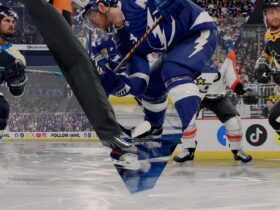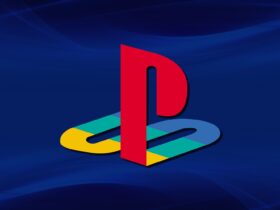The God of War franchise has come a long way from the angry and vengeful Ghost of Sparta, swinging his Blades of Chaos into every Greek god that comes across his path. The character has moved onto a new mythology. God of War has seen two entries into Norse Mythology, and with completely different gameplay from previous God of War entries, the Norse God of War duology has a lot to live up to.

Related
God Of War: Kratos’ Biggest Regrets
In the God of War franchise, Kratos rarely ever gives his actions a second thought. Still, he’s had a few regrets over the centuries.
There’s a lot of love out there for God of War (2018) and God of War: Ragnarok. It’s always nice to see a sequel live up to the expectations of its predecessor, but, which game is better? Both games are excellent examples of triple-A titles, with riveting combat, breathtaking graphics, and emotional acting, but both games have their positives and negatives.
Updated on December 23, 2024, by Jake Fillery: There is always a constant debate surrounding God of War (2018) and God of War Ragnarok to decide which of them deserves the crown for being the best new God of War game in the Norse Mythology. While both deserve their flowers and their critical acclaim, there are some factors that players might want to consider in the debate, and with these points raised, it might open further discussion surrounding these incredible games and which one is preferred over the other in a friendly comparison of the two.
Potential spoilers ahead for God of War (2018) and God of War Ragnarok
Character Development
An Array of Emotion, Felt by Players and Characters Alike
The character evolution of Kratos is worthy of its own discussion, but it’s true that many fans of the character were nervous to see him return to God of War (2018) purely because they didn’t want him to be a completely different character. However, the game presents a Kratos that is trying to be better, for the sake of his child. It’s a natural evolution of his character that makes the story more personal to him, but the characters he meets certainly get a more deserving spotlight in God of War Ragnarok.
God of War Ragnarok takes more time to focus on characters like Brok, Sindri, Freya, and Atreus. While Kratos is still the deserving protagonist, his character development is more so on the same path of trying to not be the god he once was, while further depth is provided to the side characters that experience rage, grief, and further understandings of who they are. God of War Ragnarok does a great job at making players feel strong emotions for these characters and the hardships they endure.
Atmosphere
An Introduction to Mysteries of Norse Mythology
Leaving behind the Norse Mythology with its own twists, the God of War series had an immense road of research and love for a new saga ahead of it, but it’s one it accomplishes with triumph. God of War (2018) slowly brings players into this world, allowing them to see the lived-in nature and mysteries of the mythology of gods and monsters, while also teasing what future awaits Kratos and Atreus as they further involve themselves with the Aesir that Kratos fears.

Related
God Of War Ragnarok: The Best Blades Of Chaos Attachments, Ranked
Kratos may resent the Blades of Chaos in God of War Ragnarok, but they are a cool and fiery weapon that can be improved with the best attachments.
God of War Ragnarok has a more direct approach to mythology and introduces many iconic gods like Thor, Odin, and Heimdal. Whilst the pantheon being shown is great, and each of them is distinct in their godhood and personality, there was something about immersing in God of War (2018) that helped it to win this round for atmosphere. The reveal of the World Serpent, the tease of Aesir gods, and the beasts, were all something to marvel at upon a first playthrough.
Combat
Stellar Combat That is Refined With More Weapons in the Sequel
The previous entries in the God of War series involved a lot of hacking and slashing with the Blades of Chaos. When players first embark as Kratos in God of War (2018), the first thing they would notice is the different gameplay. The combat is over-the-shoulder, with a powerful Leviathan Axe. Players fight more intimately, with ways to evade, block, parry, and juggle enemies with powerful succession.
Combat in God of War: Ragnarok is more evolved from God of War 4. Players will immediately have access to the Leviathan Axe and the Blades of Chaos. These weapons feel beautifully rageful in God of War: Ragnarok, with plenty of new ways to attack in what feels like a ballet of war. The combat is a lot more refined in God of War: Ragnarok, and adds a new addition with the Draupnir Spear.
Iconic Moments
Gigantic Set Pieces Worthy of Replaying
Returning to the life of Kratos was a gigantic moment in the gaming world. This is the same Kratos that fans remember for killing the Greek Pantheon. God of War is a spectacle of iconic moments. From the first fight with The Stranger to the gigantic battle against Freya and Baldur. Seeing Kratos return brings many iconic moments to the game. Some powerful, and some extremely emotional, with plenty to live up to for God of War sequels.
3:57

Related
One of PlayStation’s flagship franchises, Santa Monica Studio’s God of War has produced plenty of great games. Naturally, some are better than others.
There are some great moments in God of War 5, from the spectacle of Kratos in battle during Ragnarok to the extreme boss fights of Kratos vs Thor. However, the iconic moments in God of War: Ragnarok do not live up to God of War (2018), as some scenes lack the power of Kratos’ godhood taking charge of the scenery.
Expectations
A Return of a Violent God With Deserving Change
There was much riding on God of War (2018). Fans had not seen a God of War title in years, and maturing Kratos was a gamble that luckily paid off. God of War (2018) created an emotional story with an entirely new set of gameplay that seemed foreign to the franchise. Everything worked in God of War (2018), and the expectations were beyond many fans’ wildest dreams for Kratos vs the Norse Pantheon.
Going into God of War: Ragnarok, expectations were high regarding the predecessor being so beloved. There was a lot promised in God of War: Ragnarok, with the confrontation of Odin and Thor and the mysteries of Tyr unveiled. However, God of War (2018) had far more of a gamble and exceeded expectations as an evolution of Kratos and the series. This does not mean that God of War: Ragnarok did not live up to the hype, as the sequel hit all the right marks and more.
Characters
An Introduction to Characters and Further Exploration of Them is Commendable
Considering that God of War (2018) tells a much more intimate story, the characters are rather limited to a father and son with Kratos and Atreus. Other characters make big impressions and important inclusions, like Baldur, Freya, and Mimir, but the latter two are not given their big moments, considering that God of War (2018) is not their game.
When players re-enter the Nine Realms in God of War: Ragnarok, there are many more characters involved in the game. Many Norse Mythology characters and gods, Aesir and Vanir appear, and they are all given time to breathe and become fleshed out, presenting further character developments for beloved and new characters in God of War.
Boss Fights
An Incredible Pantheons of Boss Fights Across Both Games
Boss fights have always been an integral part of the design of God of War. They make the player feel powerful, and there are some great spectacles God of War boss fights for the Norse games. The first Norse God of War features great boss fights, but they are fairly limited in what they offer.

Related
God Of War Games With The Best Stories, Ranked
Despite being an action-heavy franchise, many of the God of War games possess compelling narratives that hook fans from the start.
Santa Monica Studio learned a lot from God of War (2018), and as such, there’s a wider variety of boss fights in God of War: Ragnarok. These boss fights are difficult, engaging, and unique for each encounter. With dragons, Berserkers, gods, and more, God of War: Ragnarok has amazing boss fights.
Content
Smaller Sandbox Areas Compared to the Entirety of the Nine Realms
There’s a giant sandbox waiting to be explored in God of War (2018). Many areas can be traversed throughout the realms available, with some places needing further story progression to truly explore everything. However, not all realms are available, and some areas are smaller than others, like Muspelheim and Niflheim, which act as late-game side areas.
Each of the Nine Realms in God of War: Ragnarok holds some major importance in the story and exploration. Players will visit each realm and in doing so, will be rewarded with plenty of side content. With the God of War: Ragnarok ending, there’s even more content in the post-game, providing players with plenty of things to do, more so than the previous title.
Story
A Grieving and Distant Father / A Father Afraid to Lose His Son to Prophecy
After the death of his wife, Faye, Kratos must take her ashes to the highest peak of all the realms whilst raising their son, Atreus. Kratos is a distant father with a past that makes him hate all gods, himself included. God of War (2018) is the story of a father and son, and it’s nothing short of beautiful, a true tale to marvel at when one considers how far Kratos has come.
The story of God of War: Ragnarok continues with the mature themes presented in God of War (2018). Kratos is slowly accepting who he was, but his frustration grows as Atreus continues to try and discover who Loki is, whilst Kratos tries to alter fate against a coming war with Odin and the Aesir. God of War: Ragnarok is bigger, with the narrative shared more equally between Kratos and Atreus. However, God of War (2018) has a superior story. It is intimate and hard-hitting it is as a return to Kratos and his evolution.
Endings
Both Games Feature Satisfying Endings With Room For Further Stories
A satisfying ending is an important aspect of any story, and both God of War titles do so wonderfully. With God of War (2018), the game had the responsibility to set up a sequel but still managed to satisfy players with Kratos’s earned acceptance of himself, and thus, the acceptance of his son and how together, they could break the cycle of patricide and be better. It’s a loving conclusion to Kratos’s long journey that ends in him loving his son despite his self-hatred, but will often be overshadowed by a remembrance of Thor arriving on Kratos’s doorstep.
As the finale to the Norse mythology, God of War Ragnarok had to conclude many story beats, but still managed to leave some doors open for further exploration. Ending the story, having Kratos and Atreus still be alive, and featuring an emotional funeral for a dear friend, made God of War Ragnarok feel satisfying, but not without its sacrifices. It’s an incredible ending, and it leaves excitement for where Kratos’s story could go next as he becomes the God of Hope and his son, Atreus, leaves with love in his heart to find his fate.
Conclusion: God Of War (2018)
The 2018 Soft-Reboot Wins
By no means is God of War: Ragnarok a lesser game. For it perfects many things over its predecessor. The story of God of War: Ragnarok is well worth the praise it gets, but when compared to God of War (2018), the original Norse God of War title is far more exciting for the prospects of what it brought to the franchise, rather than the conclusion of the Norse titles.
When it comes to succeeding, both titles are stellar forms of art, but God of War (2018) beat out the expectations. The team at Santa Monica Studio knocked it out of the park with this new mythology, which leads directly into God of War: Ragnarok, a sequel of near equal measure.


























Leave a Reply